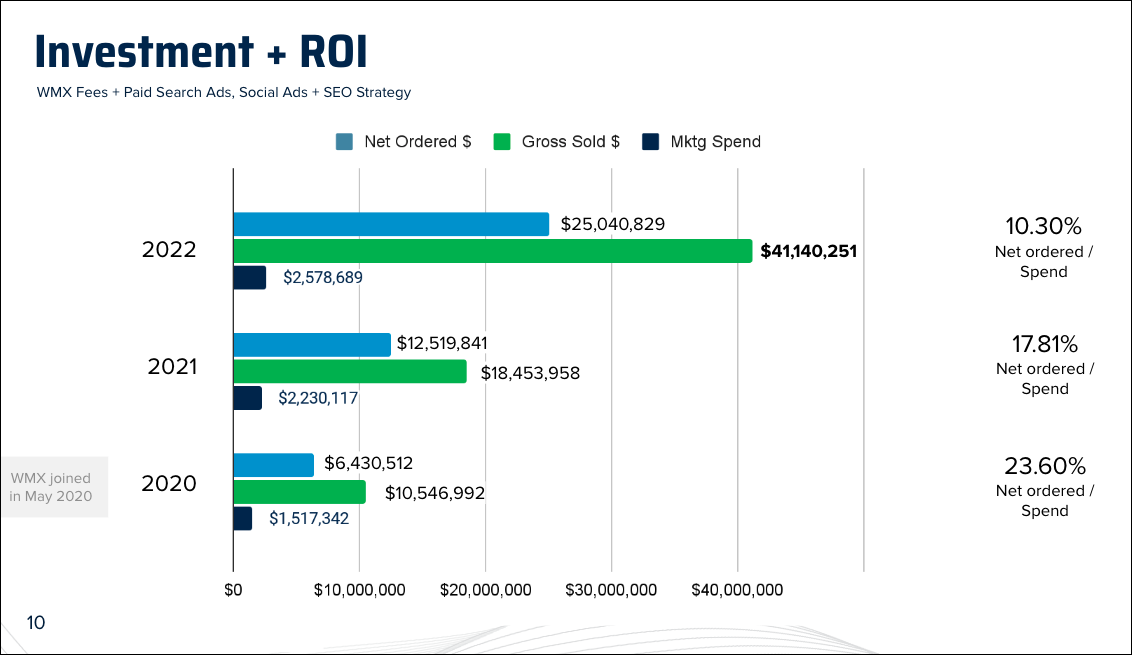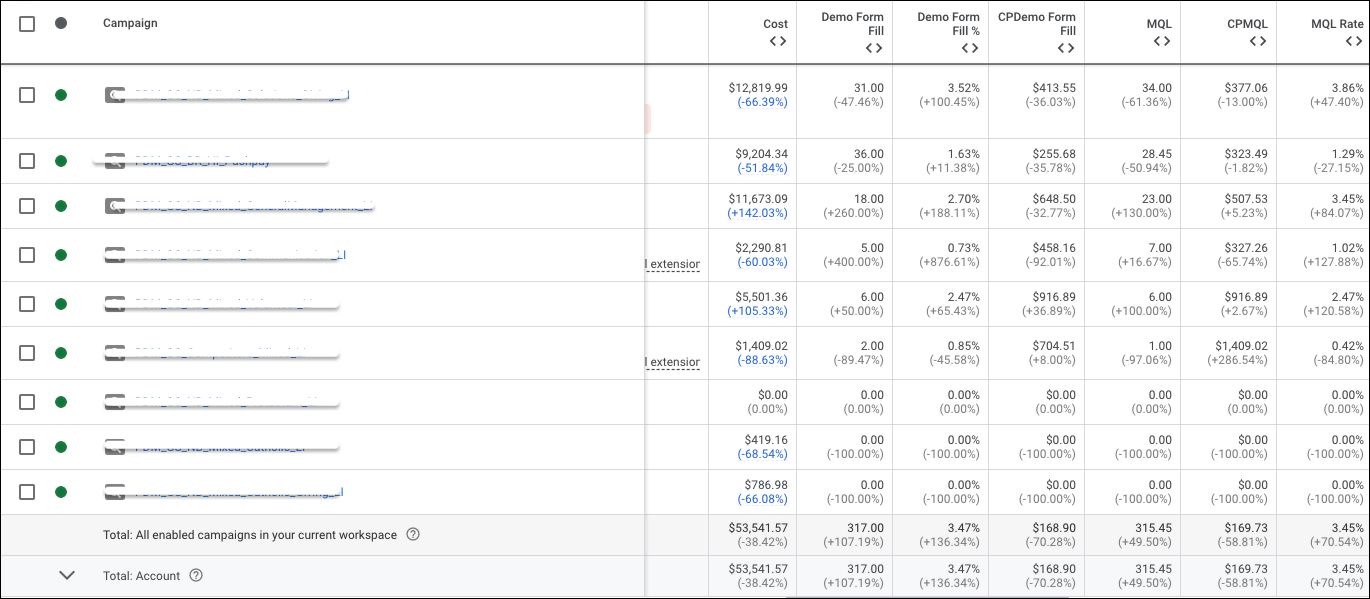Value-based bidding and smart bidding are two powerful tools that have evolved considerably since their introduction. These bidding strategies allow Google to set the bids in each auction with the goal of achieving a desired business outcome.
For example, if you were using TROAS, which is a value-based bid strategy, you would set the desired return on ad spend, and Google would try to achieve that number over a 30-day period.
In this video, Taylor Mathauer and I share how we used Value-Based Bidding to generate higher-quality leads for our client.
You will learn:
- Why they decided to use value-based bidding
- Success with value-based bidding
- The state of smart bidding and limitations with value-based bidding
- Where they’ve seen value-based bidding not work
- Requirements for using value-based bidding
- When is value-based bidding appropriate
- How to track success with value-based bidding
Let’s understand the state of Smart Bidding for a minute.
Some marketers make the mistake of viewing smart bidding as a quick fix or hack to improve the performance of underperforming campaigns. The truth is that smart bidding is most effective when implemented on campaigns that are already performing well.
It can help take those campaigns from good to great by optimizing bids and targeting more precisely.
One challenge with smart bidding is that it requires a solid understanding of the underlying data and the algorithms driving the bidding process. Achieving success with smart bidding requires striking a balance between automation and human expertise.
The best results are often obtained through a combination of data-driven bidding strategies and human insights.
4 limitations of value-based bidding
Limitation #1: Micro conversions often fail to drive meaningful downstream actions.
Micro conversions have been explored as a way to increase the quality of traffic from Google Ads when there is not enough conversion volume to switch to a value-based bidding model. By focusing on engagement conversion actions that signal high intent from users, it was hoped that the downstream conversion actions such as form fills, MQLs, and SQLs would increase.
However, the results showed that while engagement conversion actions increased, there was no corresponding increase in downstream conversion actions.
Limitation #2: Limited conversion data makes value-based bidding less reliable.
Working with limited conversion data can be challenging when implementing value-based bidding. This is because unlike max conversions and tCPA, where Google only has to calculate the likelihood of a user converting at the time of query, tROAS requires an additional calculation of the conversion’s value.
Therefore, it is important to have sufficient conversion data to implement this strategy successfully.
Limitation #3: Large portfolios with diverse geographies and keywords create signal inconsistencies.
Working in large portfolios with vastly different geographies and keywords can pose challenges for bid strategies. Google uses many contextual signals to determine bids for each auction, and if the geographies and keywords vary greatly within a portfolio, the signals used by Google to determine bids may differ between campaigns.
This can lead to poor performance of the portfolio and should be taken into consideration when implementing portfolio bidding.
Limitation #4: Frequent adjustments to bid strategies can disrupt performance.
It is important to give bid strategies time to adjust to new performance goals, and not to adjust them too frequently or aggressively. Shifting to a value-based bid strategy or smart bid strategy can result in fluctuations in performance, and patience is needed to see the best results.
What are the requirements for using value-based bidding?
GCLID needs to be passed into CRM and down to each milestone in the CRM or you need to have enhanced conversions setup. So that the data being passed from the CRM into Google Ads can be linked to the specific ad click.
Typically, to use value-based bidding, we like to have 45 conversions over the last 30 days for the specific conversion action that we are optimizing towards at the level we will be setting the bid strategy at. It is necessary to have more data than when using tCPA or Max Conversions to ensure that Google has sufficient data to optimize bids effectively.
How to track success with value-based bidding?
Value-based bidding effectively maximizes revenue and increases efficiency for clients. To achieve this, focus on improving the targeted conversion action, whether it’s an MQL or SQL. Discuss expectations and goals extensively with the client before switching to a value-based bidding approach.
Although lead volume may decrease initially, the quality of leads should improve, driving more revenue for the client. By filtering out unprofitable leads, you ensure marketing efforts generate higher revenue and deliver better results.

Shift your campaign conversion actions
When it comes to switching from Pixel-based tracked conversions to imported CRM conversion actions, it’s important to take a staged approach. At WebMechanix, we typically take a step-by-step approach when transitioning to value-based bidding that looks like this:
- Standard Form Fill conversion tracked via Pixel.
- Qualified Form Fill conversion tracked via Pixel.
- MQL conversion from CRM import.
- SQL conversion from CRM import.
- Closed Deal conversion from CRM import.
The funnel stage you can actually optimize towards will depend on the volume of the particular conversion action and the time it takes for the conversion to happen. It’s important to note that Google’s maximum conversion window is 90 days. Therefore, if your client has an extended sales cycle, you can only optimize toward a conversion action that occurs within 90 days from the ad click.
When setting up your new conversion actions it is essential that you add them as secondary conversion actions. If you set them as primary conversion actions Google will start including them in your conversions column and in your smart bidding strategies. This is an issue because it can lead to overcounting conversions and throwing off the bid strategies that are already in use.
If you were already tracking form fills then added a conversion action for MQL and SQL and had a user make it to each stage Google would count 3 conversions for that one user.
Maintain and improve campaigns while using value-based bidding
Once value-based bidding is implemented, there is still a need to optimize campaigns to meet clients’ expectations. They not only desire enhanced efficiency but also a steady increase in volume on a monthly and quarterly basis. To achieve this, it remains crucial for us to concentrate on improving front-end metrics such as click-through rate, average cost per click, and form fill rates.
By continuously refining these key indicators, you can ensure that your campaigns are not only efficient but also deliver the desired growth in results.
During client onboarding, I’ve encountered a situations where value-based bidding had been implemented successfully, but the client expressed dissatisfaction with the volume of results. In this particular case, the previous agency had adopted VBB and focused solely on marketing qualified leads as the primary conversion action, neglecting to monitor the form fill rate.
Fortunately, we swiftly improved performance by establishing custom columns and conducting conversion rate optimization tests to enhance the form fill rate. These actions allowed us to address the client’s concerns effectively and achieve better outcomes.

When implementing value-based bidding, one common issue that arises is a noticeable spike in the average cost per click. This is to be expected since VBB involves paying more to display ads on queries where users are more likely to convert into the down funnel action you are optimizing towards.
While an increase in Avg. CPC is typical while using a VBB strategy, I have also been successful in reducing it while using VBB. The cost per click and ad rank for each auction are determined by two factors: the bid and the quality score. Since we relinquish control over setting specific bids, we can bring down the average cost per click by improving the quality score.

By focusing on enhancing the quality score, you can optimize the cost-effectiveness of VBB and achieve more favorable results.
Optmyzr can make value-based bidding work for you
Optmyzr’s tools have been built to help advertisers like yourself find success with value-based bidding.
Thousands of advertisers — from small agencies to big brands — worldwide use Optmyzr to manage over $5 billion in ad spend every year.
You will also get the resources you need to get started and more. Our team will also be on hand to answer questions and provide any support we can.
Sign up for a full functionality 14-day free trial.








